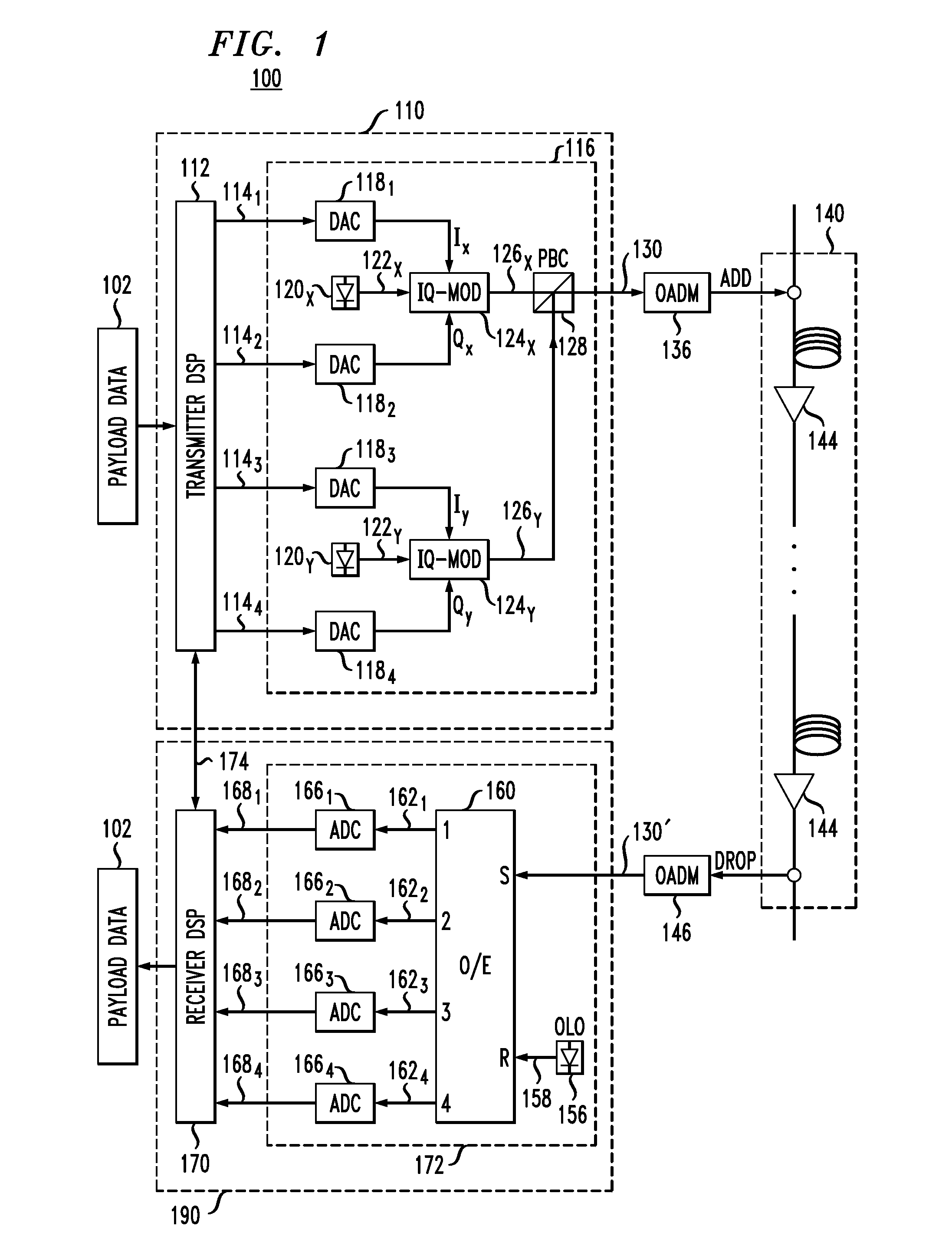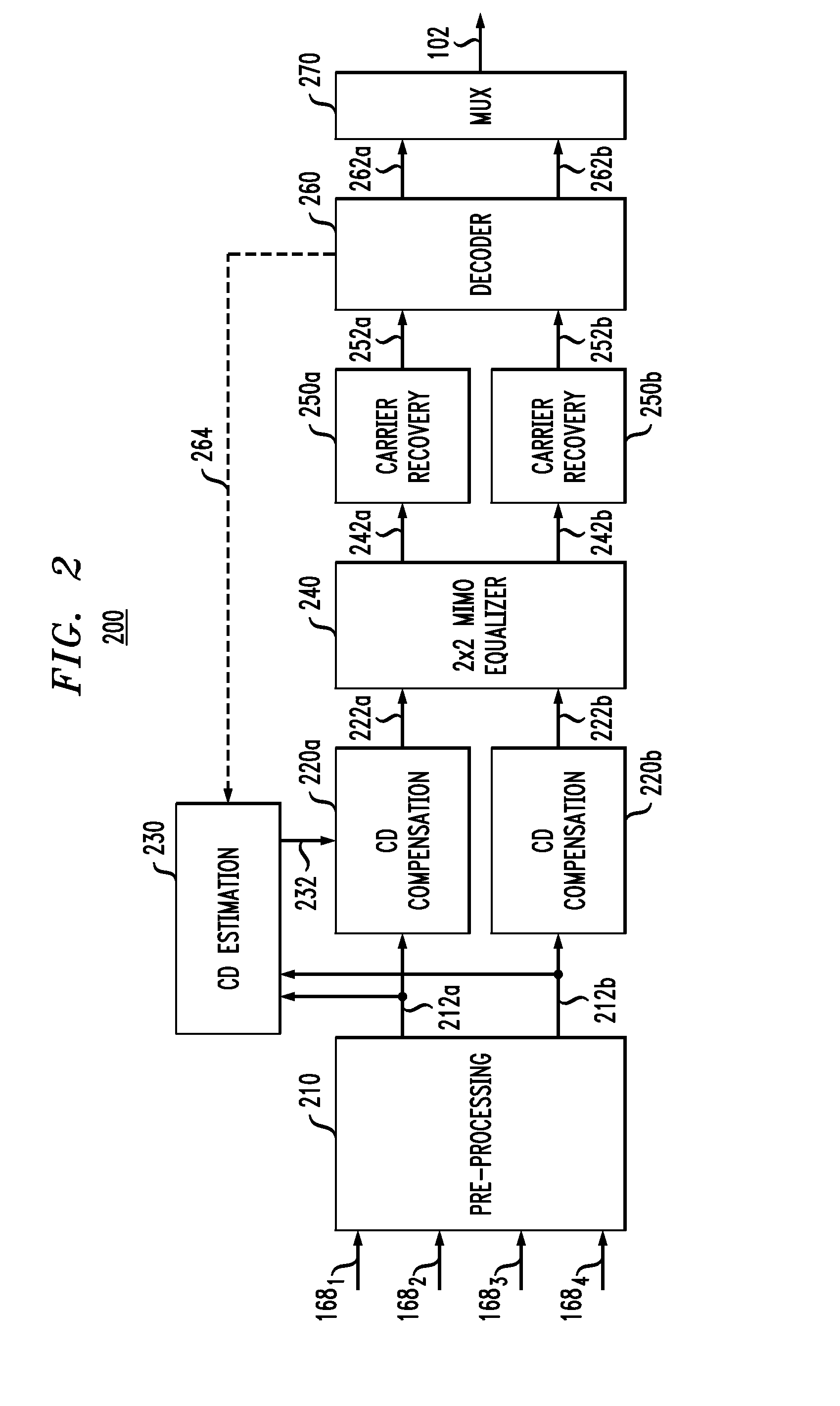Optical receiver having a chromatic-dispersion compensation module with a multibranch filter-bank structure
- Summary
- Abstract
- Description
- Claims
- Application Information
AI Technical Summary
Benefits of technology
Problems solved by technology
Method used
Image
Examples
Embodiment Construction
[0007]Disclosed herein are various embodiments of an optical receiver having an electronic dispersion-compensation module with two parallel signal-processing branches configured to provide a greater range of dispersion compensation than that provided by a prior-art device of comparable implementation complexity. In an example embodiment, each of the signal-processing branches includes a respective bank of finite-impulse-response filters that are configured in accordance with a different respective approximation of the group delay that needs to be compensated. The two group-delay approximations used by the filter banks rely on different respective step functions, each having a respective plurality of quantized steps, with the transitions between adjacent steps in one step function being spectrally aligned with the flat portions of the corresponding steps in the other step function. The filter banks may be further configured to apply different respective frequency-dependent phase-shif...
PUM
 Login to View More
Login to View More Abstract
Description
Claims
Application Information
 Login to View More
Login to View More - R&D
- Intellectual Property
- Life Sciences
- Materials
- Tech Scout
- Unparalleled Data Quality
- Higher Quality Content
- 60% Fewer Hallucinations
Browse by: Latest US Patents, China's latest patents, Technical Efficacy Thesaurus, Application Domain, Technology Topic, Popular Technical Reports.
© 2025 PatSnap. All rights reserved.Legal|Privacy policy|Modern Slavery Act Transparency Statement|Sitemap|About US| Contact US: help@patsnap.com



